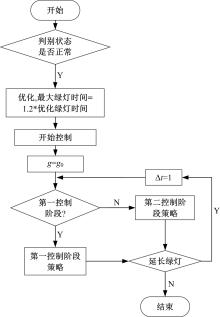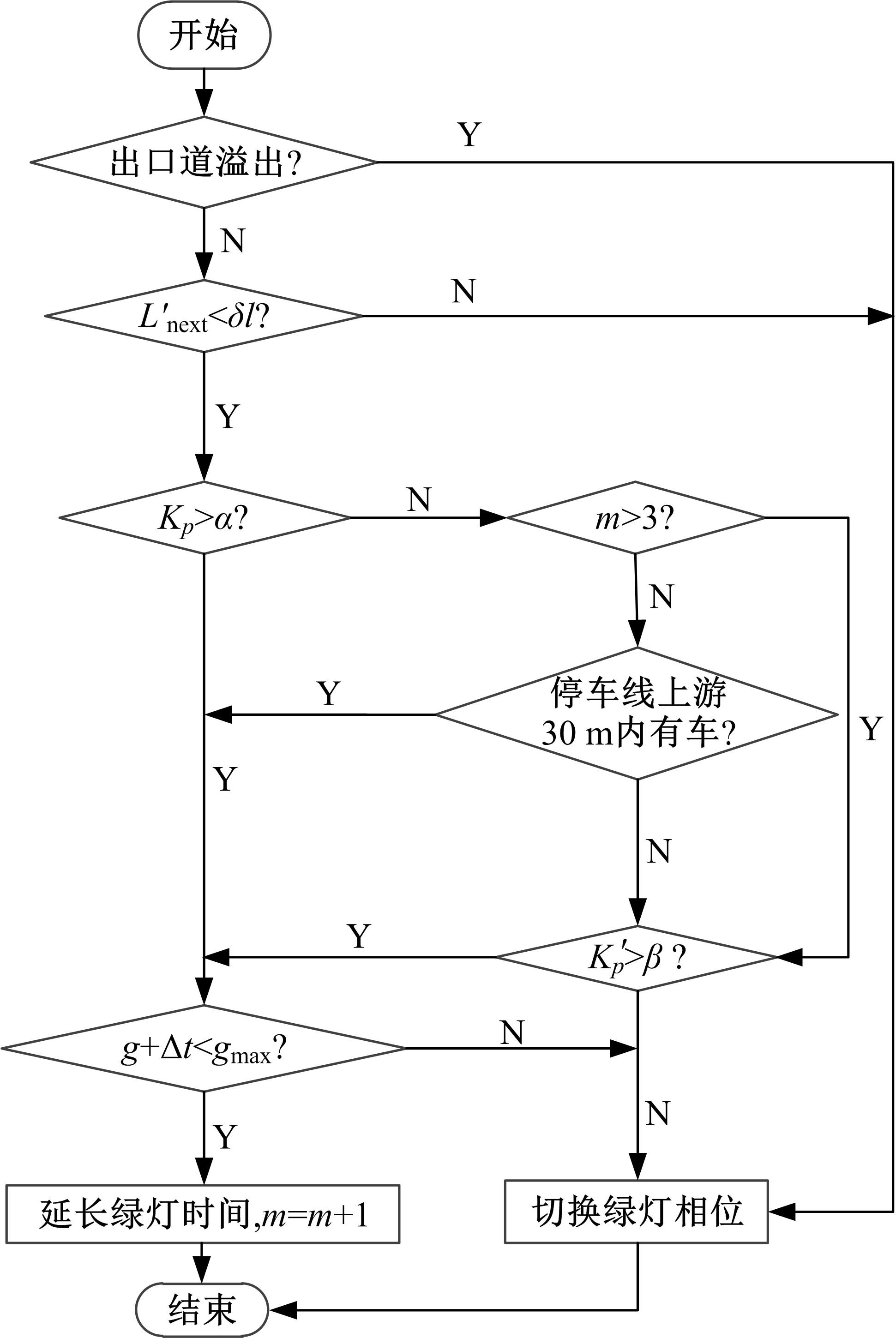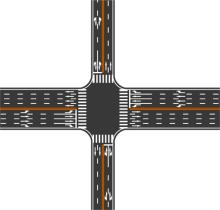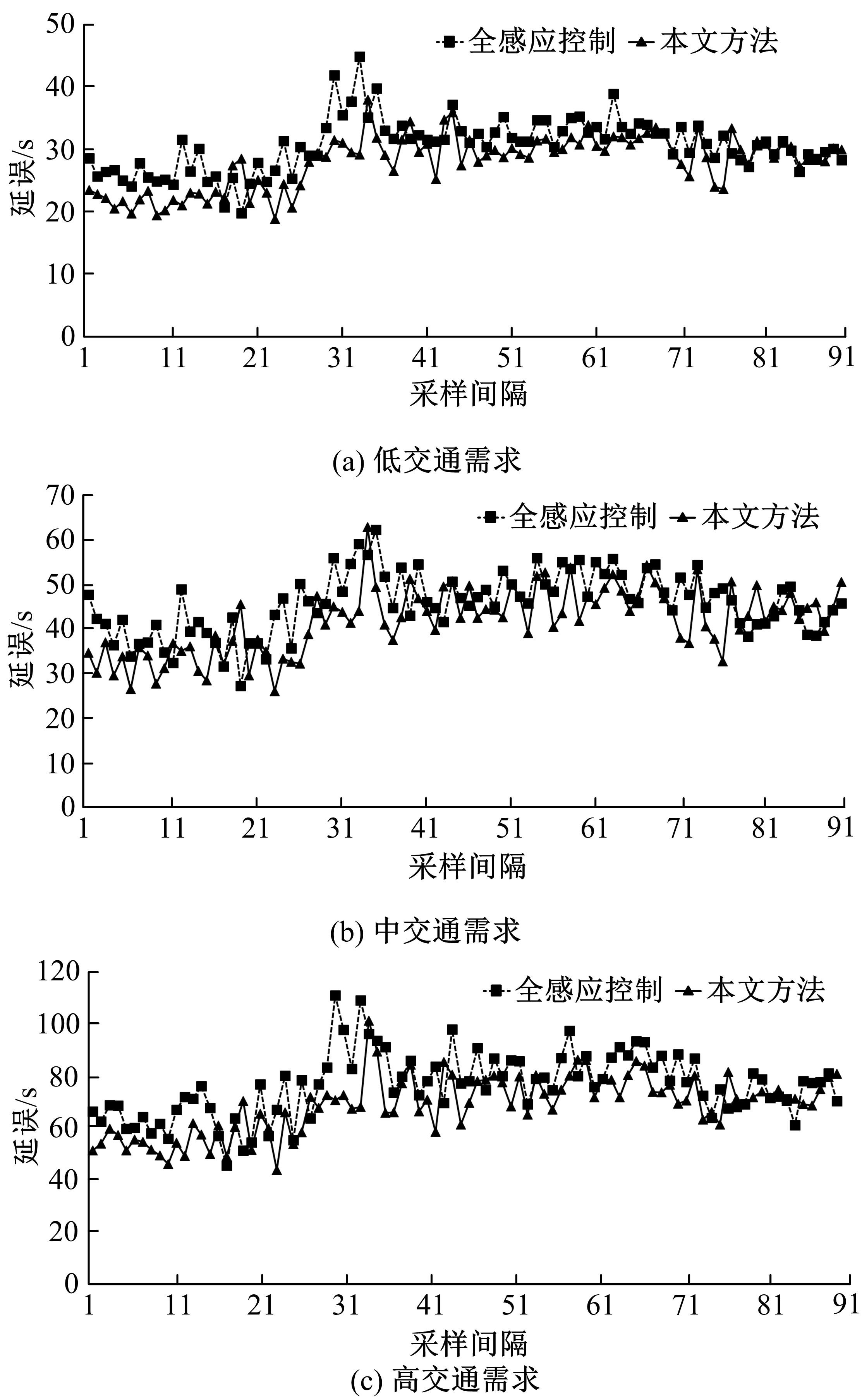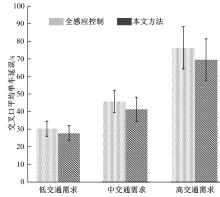Journal of Jilin University(Engineering and Technology Edition) ›› 2022, Vol. 52 ›› Issue (10): 2456-2465.doi: 10.13229/j.cnki.jdxbgxb20210313
Traffic signal control method at isolated intersections based on multi-target radar data
Dong-bo LIU1,2( ),Li-xiao SHEN3,Lei-lei DAI2(
),Li-xiao SHEN3,Lei-lei DAI2( ),Jian LU1
),Jian LU1
- 1.School of Transportation,Southeast University,Nanjing 211189,China
2.Traffic Management Research Institute of the Ministry of Public Security,Wuxi 214151,China
3.Zhejiang Urban and Rural Planning Design Institute,Hangzhou 310027,China
CLC Number:
- U491
| 1 | 王殿海, 金盛, 马东方, 等. 城市交通控制理论与方法[M]. 北京: 电子工业出版社, 2019. |
| 2 | 曹阳. 基于模拟退火的交叉口自适应信号控制优化研究[J]. 交通运输工程与信息学报, 2018, 16(1): 49-55, 60. |
| Cao Yang. Optimization of adaptive signal control using simulated annealing algorithm[J]. Journal of Transportation Engineering and Information, 2018, 16(1): 49-55, 60. | |
| 3 | 李祥尘, 李进龙, 何梦辰. 基于相位优化的干线双向绿波协调控制方法[J]. 交通运输工程与信息学报, 2018, 16(1): 115-121. |
| Li Xiang-chen, Li Jin-long, He Meng-chen. A phase optimization based two-way green wave control strategy for urban arterials[J]. Journal of Transportation Engineering and Information, 2018, 16(1): 115-121. | |
| 4 | Miller A J. A computer control system for traffic network[C]∥Proc of the 2nd International Symposium on Theory of Road Traffic Flow, London, UK,1963:201-220. |
| 5 | Gartner N H. OPAC: a demand-responsive strategy for traffic signal control[J]. Transportation Research Record, 1983, 906: 75-84. |
| 6 | Vincent R A, Young C P. Self-optimizing traffic signal control using microprocessors—the TRRL' Mova' strategy for isolated intersections[J]. Traffic Engineering& Control, 1986, 27(7/8): 385-387. |
| 7 | Crabtree M R, Henderson I R. MOVA traffic control manual application guide [M]. Hongkong: TRI Limited, 2005. |
| 8 | 徐洪峰, 柳爽, 张栋, 等. 单点全感应式信号控制方法的参数取值[J]. 吉林大学学报: 工学版, 2019, 49(1): 45-52. |
| Xu Hong-feng, Liu Shuang, Zhang Dong, et al. Configuring parameters of fully actuated control at isolated signalized intersections[J]. Journal of Jilin University (Engineering and Technology Edition), 2019, 49(1): 45-52. | |
| 9 | 徐洪峰, 耿现彩. 面向T形交叉口的机动车相位固定最小绿灯时间计算[J]. 吉林大学学报: 工学版, 2011, 42(3): 600-605. |
| Xu Hong-feng, Geng Xian-cai. Absolute minimum green time calculation for vehicles at 3-leg intersection[J]. Journal of Jilin University (Engineering and Technology Edition), 2011, 42(3): 600-605. | |
| 10 | Wang X B, Yin K, Liu H. Vehicle actuated signal performance under general traffic at an isolated intersection[J]. Transportation Research Part C: Emerging Technologies, 2018, 95: 582-598. |
| 11 | 罗小芹, 王殿海, 金盛. 面向混合交通的感应式交通信号控制方法[J]. 吉林大学学报: 工学版, 2019, 49(3): 695-704. |
| Luo Xiao-qin, Wang Dian-hai, Jin Sheng. Traffic signal actuated control at isolated intersections for heterogeneous traffic[J]. Journal of Jilin University (Engineering and Technology Edition), 2019, 49(3): 695-704. | |
| 12 | Feng Y H, Head K L, Khoshmagham S, et al. A real-time adaptive signal control in a connected vehicle environment[J]. Transportation Research Part C: Emerging Technologies, 2015, 55: 460-473. |
| 13 | Guo Q, Li L, Ban X. Urban traffic signal control with connected and automated vehicles: a survey[J]. Transportation Research Part C: Emerging Technologies, 2019, 101: 313-334. |
| 14 | Kamal M, Hayakawa T, Imura J. Development and evaluation of an adaptive traffic signal control scheme under a mixed-automated traffic scenario[J]. IEEE Transactions on Intelligent Transportation Systems, 2020, 21(2): 590-602. |
| 15 | Feng Y, Zheng J, Liu H. Real-time detector-free adaptive signal control with low penetration of connected vehicles[J]. Transportation Research Record: Journal of the Transportation Research Board, 2018, 2672(18): 35-44. |
| 16 | Yao Z H, Jiang Y S, Zhao B, et al. A dynamic optimization method for adaptive signal control in a connected vehicle environment[J]. Journal of Intelligent Transportation Systems, 2019, 24(2): 184-200. |
| 17 | Li L, Lv Y, Wang F Y, Traffic signal timing via deep reinforcement learning[J]. Traffic Signal Timing Via Deep Reinforcement Learning, 2016, 3(3): 247-254. |
| 18 | 孙浩, 陈春林, 刘琼, 等. 基于深度强化学习的交通信号控制方法[J]. 计算机科学, 2020, 47(2): 169-174. |
| Sun Hao, Chen Chun-lin, Liu Qiong, et al. Traffic signal control method based on deep reinforcement learning[J]. Computer Science, 2020, 47(2): 169-174. | |
| 19 | Chu T S, Wang J, Codeca L, et al. Multi-agent deep reinforcement learning for large-scale traffic signal control[J]. IEEE Transactions on Intelligent Transportation Systems, 2019, 21(3): 1-10. |
| 20 | Tan K L, Poddar S, Sarkar S, et al. Deep reinforcement learning for adaptive traffic signal control[C]∥ ASME Dyn Syst Control Conf, Columbus,USA,2019. |
| 21 | Genders W, Razavi S. Asynchronous N-step Q-learning adaptive traffic signal control[J]. Journal of Intelligent Transportation Systems, 2019, 23(4): 319-331. |
| 22 | 唐杰祯. 基于广域雷达的单点信号控制配时优化研究[D]. 南京:东南大学交通学院, 2019. |
| Tang Jie-zhen. Research on timing optimization of single-point signal control based on wide area radar[D]. Nanjing: College of Transportation,Southeast University, 2019. | |
| 23 | 安娜. 基于多目标跟踪雷达的单点全感应式信号控制方法[D]. 大连:大连理工大学交通运输学院, 2020. |
| An Na. Fully-actuated signal control at isolated intersections based on multi-target tracking radar[D]. Dalian: School of Transportation, Dalian University of Technology, 2020. | |
| 24 | 别一鸣, 姜凯, 汤茹茹, 等. 考虑方案过渡影响的单点交通控制时段划分方法[J]. 吉林大学学报:工学版, 2019, 49(6): 1844-1851. |
| Bie Yi-ming, Jiang Kai, Tang Ru-ru, et al. Time of interval partition for traffic control at isolated intersection considering impacts of plan transition[J]. Journal of Jilin University (Engineering and Technology Edition), 2019, 49(6): 1844-1851. |
| [1] | Hong-feng XU,Hong-jin CHEN,Dong ZHANG,Qian-hui LU,Na AN,Xian-cai Geng. Fully⁃actuated signal timing technique for isolated signalized intersections in connected vehicle environment [J]. Journal of Jilin University(Engineering and Technology Edition), 2022, 52(6): 1324-1336. |
| [2] | Ci-yun LIN,Tian-cheng XIE,Wei QIN,Xu GUO,Zheng-hao LI,Zhen ZHENG. Optimization methods of intersection signal timing parameters under ice and snow condition [J]. Journal of Jilin University(Engineering and Technology Edition), 2022, 52(10): 2316-2324. |
| [3] | Rong-han YAO,Wen-yan QI,Liu-jie ZHENG,Da-yi QU. Settings of guiding markings for left⁃turning vehicles based on lane selection and vehicle trajectory [J]. Journal of Jilin University(Engineering and Technology Edition), 2021, 51(5): 1651-1663. |
| [4] | Chao JIA,Hong-ze XU,Long-sheng WANG. Nonlinear model predictive control for automatic train operation based on multi⁃point model [J]. Journal of Jilin University(Engineering and Technology Edition), 2020, 50(5): 1913-1922. |
| [5] | Da-yi QU,Yan-feng JIA,Dong-mei LIU,Jing-ru YANG,Wu-lin WANG. Dynamic partitioning method for road network intersection considering multiple factors [J]. Journal of Jilin University(Engineering and Technology Edition), 2019, 49(5): 1478-1483. |
| [6] | Qiao⁃wen BAI,Zhao⁃wei QU,Yong⁃heng CHEN,Shuai XIONG,Chu⁃qing TAO. Modeling on trajectories of through vehicles with an unprotected left⁃turn phase under non⁃strict priority [J]. Journal of Jilin University(Engineering and Technology Edition), 2019, 49(3): 673-679. |
| [7] | Hua⁃yue WU,Li⁃ren DUAN. Unstructured road detection method based on RGB entropy and improved region growing [J]. Journal of Jilin University(Engineering and Technology Edition), 2019, 49(3): 727-735. |
| [8] | XU Hong-feng, GAO Shuang-shuang, ZHENG Qi-ming, ZHANG Kun. Hybrid dynamic lane operation at signalized intersection [J]. 吉林大学学报(工学版), 2018, 48(2): 430-439. |
| [9] | SONG Xian-min, DENG Xiao-lei, GAO Ming, QU Zhao-wei. Full velocity difference model based on dynamic reaction time [J]. 吉林大学学报(工学版), 2017, 47(6): 1703-1709. |
| [10] | XU Hong-feng, ZHANG Kun, YAO Rong-han. Control strategy of full metering signalization at roundabout [J]. 吉林大学学报(工学版), 2016, 46(1): 76-84. |
| [11] | TAO Tao, XU Hong-ze. Immersion and invariance fault-tolerant control for a class high-speed trains [J]. 吉林大学学报(工学版), 2015, 45(2): 554-561. |
| [12] | XU Hong-feng, GENG Xian-cai, HE Long. Signal timing plan for fully signalized four-leg roundabouts with single-approach-entering operation [J]. 吉林大学学报(工学版), 2014, 44(4): 953-962. |
| [13] | WANG Xiao-wei, WANG Dian-hai, JIANG Sheng, JIN Sheng. Isolated intersection control based on hybrid optimization model [J]. 吉林大学学报(工学版), 2012, 42(增刊1): 170-174. |
| [14] | XU Hong-feng, GENG Xian-cai. Absolute minimum green time calculation for vehicles at 3-leg intersection [J]. , 2012, (03): 600-605. |
| [15] | LIN Ci-yun,GONG Bo-wen,ZHAO Ding-xuan, YANG Zhao-sheng. Interregional traffic signal coordination control under sudden disaster based on game theory [J]. 吉林大学学报(工学版), 2011, 41(05): 1257-1261. |
|
||
